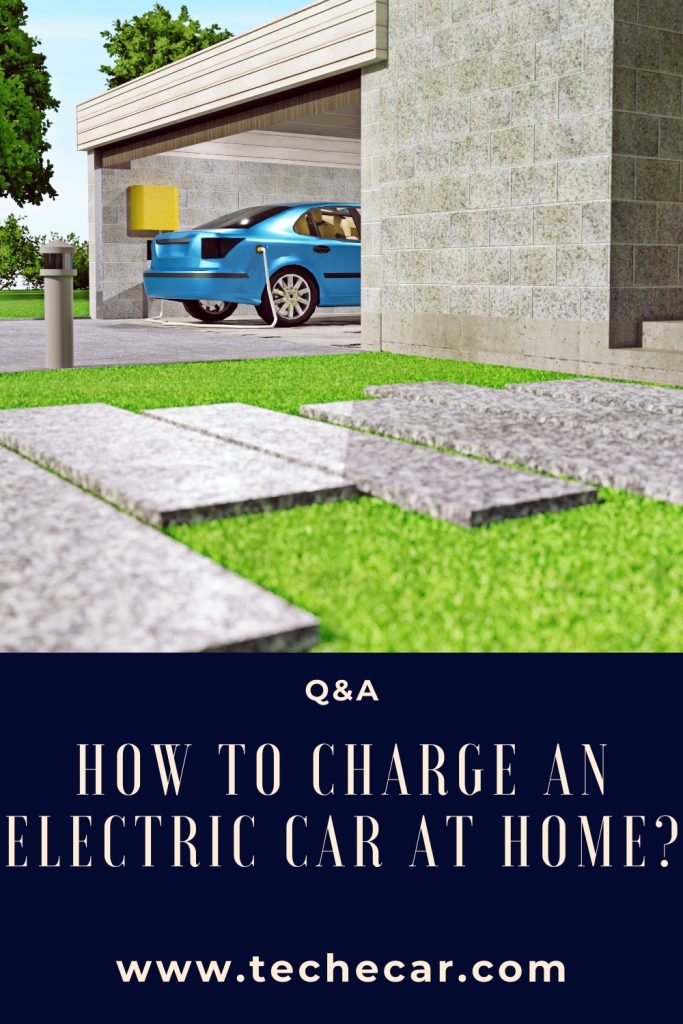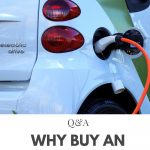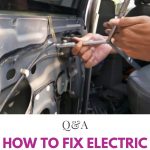How to charge an electric car at home?


Topic: How to charge an electric car at home?
When purchasing an electric vehicle, one of the most important factors must be taken into account: recharging. Contrary to what happens with combustion cars, electric cars allow them to be recharged at home. It is evident that faced with technology in clear ascent like this, doubts arise about charging an electric car at home.
Home recharging has great advantages such as greater control of energy management, economic savings, or avoiding routine trips to service stations, among others. Therefore, having a charging point in the garage, whether private or community, is easier than it seems.
Can you charge an electric car at home?
Recharging at home is specially designed to make better use of time when the car is stationary, normally at night. Thus, the next day we will find the batteries charged. Therefore, the ideal and advisable thing is to have a recharging point or a classic Schuko plug.
What is a Wallbox?
A Wallbox, or charging point, is a device designed to manage the charge of the electric car. It is an installation with precise electronics to control the recharging of the vehicle safely. This is located on the wall of the garage and stands out for the following characteristics:
- Reduction of loading times.
- More safety for batteries, avoiding voltage spikes with its discharge protection and power harmonization function.
- It can be known how much energy is consumed in recharging.
- It is possible to schedule the recharge and take advantage of the energy rates that benefit the most.
Can I recharge in a conventional socket?
Yes, (almost) all-electric vehicles are prepared to charge in the classic Schuko socket. The new recharging cables allow charging in Mode 2, avoiding voltage peaks and guaranteeing a safe recharge.
On the other hand, the most recent electric vehicles also allow knowing the energy consumed, as well as the programming of recharges, which is why today having a conventional plug, where charging an electric vehicle is an interesting option and without the need for investment in an installation and/or in a Wallbox.
The most relevant difference between the conventional plug and the Wallbox is undoubtedly the charging speed, since the Schuko charges at 2.3 kW (10A) and the charging point at more, so the recharge will be faster at this latest.
Should we change the contract and increase the power?
If we want to charge an electric car at home, we will ask ourselves whether to modify our contract with the electric company. This will depend on the contracted power and the power to which we want to load (either through a Schuko or a Wallbox). The contract can be maintained if you opt for low power and install a charging point that allows configuration at that power or if you have a conventional plug and do not need to charge more than 2.3 kW.
If we use a Wallbox that offers higher powers (from 7.4 kW to 22 kW) and shorter charging times, the contracted power may have to be increased. Another key point is choosing the appropriate rate, since using the one that is most profitable to our interests will reduce the bill to less than half.
What is clear is that, whatever our contracted power, we must use common sense and not have the most consuming equipment connected simultaneously since the vehicle will be the largest consumer in our home. In this way, we can save a lot of money with the simple gesture of making a phone call to our electricity company.
How much does it cost to charge an electric car at home?
Figures cannot be thrown lightly, especially since the price of electricity fluctuates (as with hydrocarbons) and the user can pay more or less depending on where and when he recharges his electric car.
Today, the idea is to hire a rate with hourly discrimination, also known as the Supervalle Rate or the Electric Vehicle Rate (2.0 DHS). Generally, three-time periods are established with different prices.
- Supervalle period: it is the cheapest interval of all and runs from 01:00 in the morning to 07:00 in the morning.
- Valley period: has an intermediate cost and runs from 11:00 p.m. to 1:00 a.m. and 7:00 a.m. to 1:00 p.m.
- Peak period: it is the most expensive interval and runs from 1:00 p.m. to 11:00 p.m.
The price of kWh varies according to the time of day, although it can be consulted daily on specialized portals. According to data provided by Red Eléctrica Española, the price in peak hours is € 0.136 / kWh, in off-peak hours it drops to € 0.072 / kWh, and in the supervalle period, the price of electricity is set at € 0.065 / kWh; therefore calculations can be done by multiplying by the total battery capacity. For example, the full charge of a 28 kWh Hyundai IONIQ in supervalley period would amount to € 1.82.
How long does it take to charge an electric vehicle at home?
Another of the fundamental aspects when charging an electric car at home is the duration of the charge. This, logically, depends on the recharging power. Normally, this factor is between 2.3 kW and 7.4 kW. Typically, a 16A (3.7 kW) recharge can be completed overnight, inevitably conditional on the capacity of the batteries. Also, generally, a vehicle with greater autonomy will need more time to charge.
Related to this topic, the health of the electric car battery is not harmed by partial charges. This means that the battery will not be damaged if it is not recharged 100% or by waiting until it is completely discharged to start a new charge cycle.
Using solar panels to recharge at home, is it possible?
Affirmative. With Royal Decree-Law 15/2018 on urgent measures for the energy transition and consumer protection approved in October 2018, the famous “sun tax” is ended, and different and interesting possibilities for self-consumption are given the green light.
To charge an electric car at home in this way, it is necessary to know how many solar panels are needed to recharge the electric vehicle. Thus, we must know the domestic energy management, that is, the details of our consumption and the electric car. With solar panels, we can benefit from the consumption of clean and more affordable energy.
How to install a charging point in a community garage
- This point is simpler than it might seem, since with the modification of Royal Decree 647/2011, which regulates the activity of the system’s load manager for the performance of energy recharge services, the Ministry of Energy, Tourism and Digital Agenda you only have to notify in writing the president of the community or the administrator of the farm where the installation is going to be carried out.
- Another requirement is that the charging point must be installed in accordance with the complementary technical instruction of the Electrotechnical Regulation for Low Voltage (ITC) BT 52, which is responsible for regulating the charging infrastructure for electric vehicles.
- In short, despite the exponential growth of charging points on public roads, it is highly recommended to have a charging point to charge an electric car at home, be it a Wallbox or a conventional plug.
People also asked:
How much does it cost to charge an electric car at home?
Although electricity costs vary widely, the average cost of electricity in California is around 16.58 ¢ per kilowatt hour (kWh). At that price, charging a 40kWh battery with a range of 150 miles would cost about 4.42 ¢ per mile (or about $ 6.63 for a full charge).
Can you plug an electric car into a regular outlet?
Today, all mass-produced electric vehicles include a charging unit that can plug into any standard 110v outlet. This device allows you to charge your EV from common household plugs. The downside to EV charging with a 110V outlet is that it takes a while.
Is it cheaper to charge an electric car at home?
One of the main selling points of electric vehicles (EVs) is that they are inexpensive to use. Charging one at home costs less than half the price it would cost to refuel a gasoline or diesel car, and many public charging points initially offered free electricity in an attempt to promote the adoption of electric vehicles.
How do you charge an electric car without a driveway?
If you don’t have a driveway, you’ll need to find an area in front of your property that’s as short as possible to run the charging cable from your home or your dedicated outdoor charging point to reach your EV.
Should I charge my electric car every night?
Most electric car owners charge their cars at home overnight. In fact, people with normal driving habits don’t need to fully charge the battery every night. In short, there is absolutely no need to worry about your car stopping in the middle of the road, even if you didn’t charge the battery last night.
Is an electric car worth it?
Electricity is much cheaper than gasoline, and electric vehicles are very efficient, so it will cost you much less per mile to drive an electric car. Electric vehicles also require very little maintenance. … In addition to saving money on gas and service, most EVs are eligible for a tax rebate of up to $ 7,500 from the US government.
Do you need a charging station for an electric car?
Not necessarily. There are three types of electric car charging stations and the most basic plugs into a standard wall outlet. However, if you want to charge your car faster, you can also ask an electrician to install a charging station in your home.
Can I charge my electric car with an extension cord?
Never use a household power strip extension cord when charging your electric vehicle; plugging more than one extension cord into another to reach a greater distance increases the risk of fire and electric shock.
How long do electric cars last?
An electric car battery is a proven technology that will last for many years. In fact, electric vehicle manufacturers guarantee it. Nissan, for example, guarantees that the batteries in its electric cars will last eight years or 100,000 miles, and Tesla offers a similar guarantee.
Is electric car charging free at Tesco?
Since then, thanks to this project, Tesco has installed 402 charging stations in 200 stores across the country. All exchange points are free, which means that drivers can recharge their electric vehicle battery for free while shopping.
Are electric cars cheaper to insure?
Electric cars can, in general, be more expensive to insure than a directly comparable gasoline or diesel counterpart. In 2017, a study by the price comparison website Comparethemarket found that some electric cars can cost up to 45% more to insure than their conventional counterparts.
What do I do if my electric car runs out of charge?
If you run out of power, contact your breakdown service provider and request a flatbed truck to take you to a nearby charging station. Electric vehicles should not be towed with a rope or a hoist, as this can damage the traction motors that generate electricity through regenerative braking.
What happens if your electric car runs out of charge?
In the case of a gasoline car, a highway service truck can usually bring you a can of gasoline or tow it to the nearest service station. Similarly, an electric car can simply be towed to the nearest charging station.
Do electric cars lose charge when parked?
In light of the explanation I gave above, the simple answer is that most likely yes, your EV loses some amount of charge when parked and idle. If you always plug your car in every day and keep the charge level between 20 and 80%, the amount you lose due to the vampire drain will be minimal.
Recommended Article:
Should I Charge My Electric Car Every Night Part 2?
Should I Charge My Electric Car Every Night?
How To Convert A Car To Electric?
How To Become A Tesla Mechanic?






[…] with two incorporated electric motor generators. A hybrid battery pack that you can recharge at home or a public charging station is mounted underneath the rear seats. The EPA estimates that with a fully charged battery, […]
[…] engine and an electric motor, which uses energy stored in batteries. You cannot connect a hybrid electric vehicle to charge the battery. The battery can also power auxiliary loads and reduce engine idling when […]
[…] Electric vehicles lose their charge when parked, although this is minimal, it can build up over time. Green Car Reports suggests that you charge the battery to at least 80% before parking the car. It will also disable some unnecessary systems, which would otherwise slowly drain your battery. […]